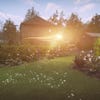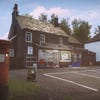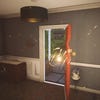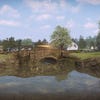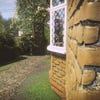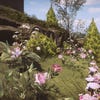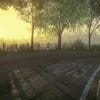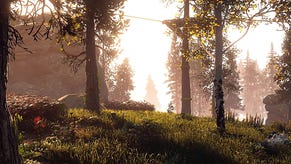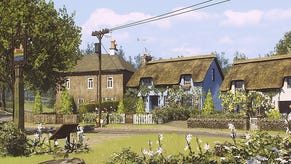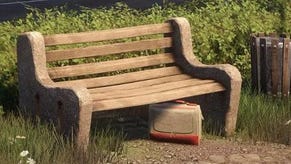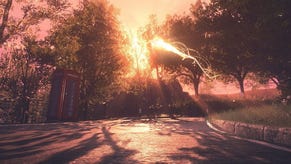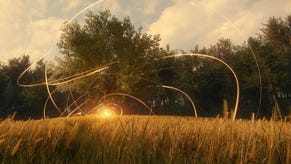Digital Foundry vs Everybody's Gone to the Rapture
One step closer to photo-realism?
From its opening shot, Everybody's Gone to the Rapture shows precisely how its three-year development was spent. It's an absolutely gorgeous PlayStation 4 title that puts its bucolic visuals front and centre - where CryEngine is tasked to render a picturesque Shropshire village. Developer The Chinese Room uses the engine's superb lighting and post effects to ramp up the atmosphere. But with such a determined drive towards photo-realism, has its frame-rate been overlooked?
Let's start with the basics. The game renders at a native 1080p, giving the countryside setting a real chance to shine. The sprawl of valleys, trees and provincial houses are sharp from a distance, while post-process anti-aliasing removes a lot of the pixel crawl you'd usually see while panning the camera. A pass of temporal AA helps reduce flickering on trees here - we suspect an iteration of the excellent, refined version of SMAA T1x found in Ryse may well be present here.
But the end results are perhaps less crisp than we'd expect from a full 1080p title. With motion blur added too, even gentle nudges to the camera really soften the image as the temporal AA engages. In fact, you can see the algorithm change just as you start to move, as if flicking an on-off switch to the game's overall clarity. Fortunately, holding the camera steady means these effects settle down, and some impressive details come into focus.
Right away, lighting is one of the game's most striking features. It's a key factor in making this world look as believable as it is, and the results are surprisingly close to its real-life counterpart. As per its GDC 2015 tech demo, CryEngine 3 offers a physically-based lighting system, meaning materials in the game react to light according to real life values. Brickwork and trees all have a natural tone, and even water uses Crytek's real-time local reflections for an accurate mirror image of nearby scenery. Frosted windows are a particular high point; light diffuses from the glass and filters into separate shafts, often dependent on the pattern of the glass' glazing (of which there are several).
There are rough spots too, though. Texture maps are often flat, and noticeably low resolution if you get too close, while geometry is limited to strict, rigid lines for houses and ornaments. There's not much in the way of tessellation going on here, but from a distance the overall effect of a parochial village is still very convincing.
Everybody's Gone to Rapture features some superb effects work too. The floating spirits around the city use CryEngine's dynamic particle system, meaning each spark produces its own light that spreads to the environment. Atmospheric touches like rolling clouds and floating pollen also play a big part, as do the shifts in time of day for flashback sequences. The latter proves the use of a genuine global lighting system across Yaughton too, rather than pre-baking its shadows. There's no fakery in play here, and shadows are all rendered in real-time, even if the update is a slow when the time of day switches.
All of which produces an uncannily realistic game world from a distance. Barring the obvious pop-in on grass, it's one of the best-looking games on PS4 to date, and taken as a whole, a lot of work has evidently gone into its world design. But how about performance? It's immediately apparent that the game isn't smooth - and though hardly demanding of fast player reactions, there is a sense that its performance could use some tuning. Essentially, we're getting between 30-40fps for the most part, with v-sync engaged to prevent tearing. However, the fact that there's an unlocked frame-rate is a problem, since the game never comes close to hitting a 60Hz refresh. Rather, it runs at a variable number that never feels fluid in motion.
Capping gameplay performance to 30fps would help. Though movement is restricted to a glacial stroll through the countryside, a stutter is still perceptible due to an uneven delivery of frames. Keeping the game at a set 30fps would ensure sure every frame rolls out at a consistent rate, and simply give it that extra bit of polish. Even though this wouldn't theoretically give us its maximum output of frames, the perceived result would be ultimately smoother. It's exactly for this reason that The Astronauts patched in a 30fps cap on The Vanishing of Ethan Carter on PS4, making it the default presentation (though frame-rate can be unlocked in the options screen).
That said, there are points where even a 30fps cap can't save it from the dreaded stutter. Interior areas overlooking the town centre are a real bugbear, as are encounters with floating spirits - where we hit a lowest point of 17fps (the highest being 50fps, while looking to the sky). It's not a deal-breaker given the game's art and story-driven priorities, and respecting the ambitions of the technology running underneath. But even at such a sluggish pace, it can occasionally be a distraction from the great things the game has to offer.
Fortunately, these sub-30fps spots aren't a constant, and the game's focus on a realistic, open village to explore, bolstered by great lighting and effects, is a real saving grace. Having migrated from the Source engine since its last effort, Dear Esther, we're seeing the studio live up to the high expectations of a PlayStation 4 project - only let down just a touch by this off-kilter performance. Everybody's Gone to Rapture is in many ways a showcase for what we can expect from CryEngine titles going forward otherwise, and given an even bigger budget to work with, we're looking forward to seeing what comes of it.





